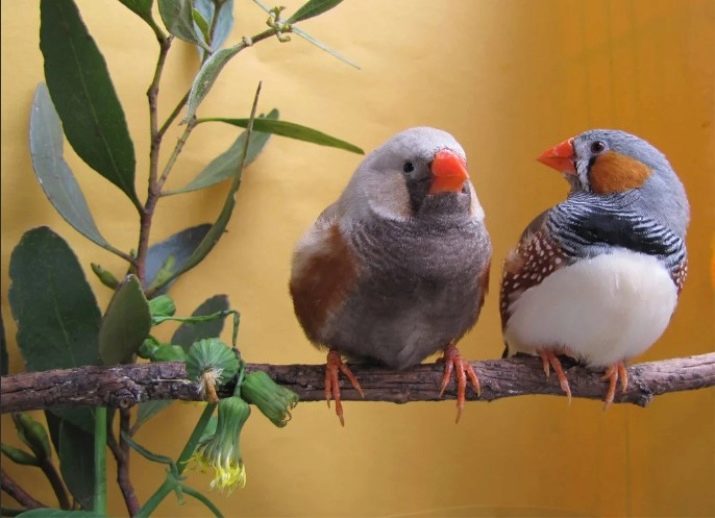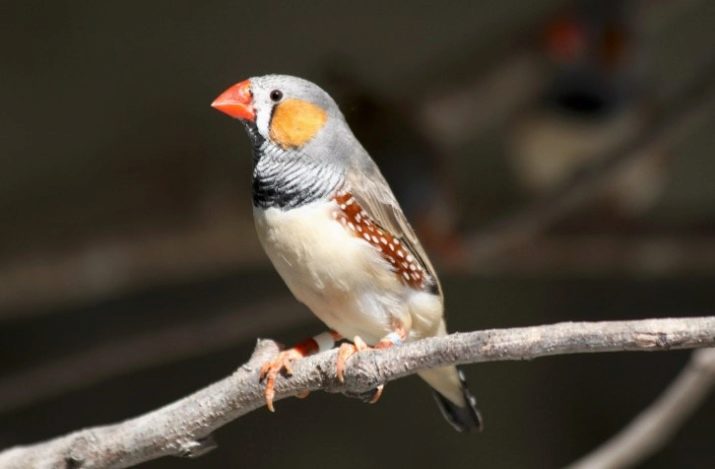It often happens that there is a desire to buy a songbird for your home, but the question arises of which gender to buy your favorite individual. Most often only males sing well. Amadins have the same story: males are significantly superior to females in their vocal abilities. Just note that the Amadins are accustomed to communication, which is characteristic of flocking birds, so you should buy a couple of birds: a female and a male. And in order not to confuse, having bought either 2 “singers” or “teachers” of chicks, you need to take care and learn how to distinguish these birds by gender.

Features of sex determination
In many birds, including Amadin, sexual dimorphism by anatomical signs is very poorly developed. This circumstance can explain the difficulty of determining their gender at first sight or even with a detailed examination. This is especially difficult for beginners in breeding birds, and even in cases where there is nothing to compare (for example, the seller’s bird has one or all the same in appearance). But do not rush, and especially trust the seller’s assurances about the gender of the birds, as there are some ways to determine the sex of the Amadina, which will help solve this problem on their own. You can determine:
- in appearance (sizes of heterosexual individuals within the same species, color of plumage and beak, dimensions of beak);
- by voice data;
- by behavior.
Each of the above ways of distinguishing a boy from a girl among Amadins requires a more detailed consideration.

In appearance
In size, the males are slightly larger than the females, but this sign is a rather weak help when choosing a pet of a young age, as well as in cases where there are no other external inter-gender differences. In many varieties, this fact is observed: the beak of a boy usually looks more massive than in girls (it is thicker), and in some subspecies it has a small hump at the base (from the side of the head). In addition, the beak of males is distinguished by its brightness, when compared with the beak of a female.

If it is possible to compare several birds within the same species, then a good sign is the intensity of their color. By color, you can determine not only the subspecies of the Amadina, but also the gender, and even the age of the bird. There are several varieties of amadina by the color of the general plumage or of individual parts of the body that have gained popularity in our country. We list a few of them as an example.
- Red-necked Amadins. Their main plumage is brown in color with dark stripes. Females have a faded color, and males in the chest area have a saturated brown spot that differs in color from the general plumage. The most important sign of the male is a red collar in the shape of the Latin letter V on the neck, if you look at the bird sitting directly. Females have no red color on their heads.

- Chestnut variety. The sex of these birds is very difficult to distinguish by plumage; females and males are practically indistinguishable by color. The only “beacon” is a transverse black stripe on the chest, separating the chestnut breast and the white belly of the bird. In the male, it is wider than in the female. And the female’s abdomen is not pure white, but rather grayish.
But these signs are noticeable only in the case of comparison, when 2 heterosexual individuals sit nearby.

- Bronze-winged Amadins. The sex of these birds is also quite difficult to distinguish separately. On their heads and tails there are islands of black color, males have much more. In addition, the bronze stripes on the sides of the boys are seen brighter than girls.

- Zebra The main distinguishing sign of a male zebra amadina is the presence of a “zebra” pattern at the junction of the chest and neck. It consists of alternating stripes of black and light color. In the female, this figure is missing. In addition, there are several artificially derived mutations of this variety of amadines. Among them, there is a white subspecies in which males can be distinguished from females only by the color of their beak: in males it is bright red, in females it is less saturated. There is also a subspecies of silver amadines having a pearl color of plumage, sometimes so light that it is similar to white.

By voice
Experts consider singing to be the most accurate sign when determining the sex of an amadina. Only the male of this type of songbird can make the longest and most complex sounds.. True, it should be noted that some varieties of amadins have neither the males nor the females, but this circumstance can be considered an exception. Amadina females can only produce short sounds, more often resembling the sound of some electronic alarms with intermittent peak-to-peak. But the volume of the sounds of the birds is much quieter.
The method of determining gender by voice has a significant drawback - birds begin to sing at the age of 4 to 6 months, not earlier.
By the way, it is at this age that you need to look for a pet from amadins. In addition, males can “pick”. And on command, they are unlikely to flood with trills, so it is often not possible to verify his vocal data when buying a pet.

By behavior
Differences in the behavior of birds are more noticeable during the nesting period in order to breed offspring. Females are more actively involved in nesting than the second half of the bird family. But the male at this time can prove himself as a singer. It is difficult to distinguish a female from a male according to behavior outside the mating season. These birds are quite active, brisk and curious, regardless of gender.
If there are 2 males in the cage, then there is a chance to “expose” them, as they will certainly conflict on different trifles: when feeding, for the right to take the best spot on the perch.And vice versa, 2 females will live together, they will not have collisions. But the latter, unfortunately, may also mean that you have both a female and a male in the cage. They will prove themselves later. For breeding, it is better to buy a heterosexual couple or several birds, among which there will be only 1 male.

For more information on how to determine the gender of zebra amadins, see the video below.









